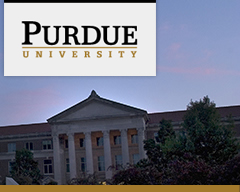Subscribe to RSS Feed (Opens in New Window)
|
3D traction forces of Schwann cells on compliant substrates Eyal Bar-Kochba, Brown University |
|
|
Biological ferroelectricity – phenomena, mechanism, and implications Jiangyu Li, University of Washington, United States |
|
|
Brian Cox, Teledyne Scientific |
|
|
Chemoenvironmental modulators of single-cell fluidity and stiffness John Maloney, MIT, United States |
|
|
Compression of fibrin networks modeled as a foam Prashant Purohit, University of Pennsylvania, USA |
|
|
Computational modeling of biomechanics: biological growth and morphogenesis Jiaoyan Li, The George Washington University, United States |
|
|
Ravindra Duddu, Vanderbilt University, United States |
|
|
Elucidating the mechanics of clathrin-mediated endocytosis Ashutosh Agrawal, University of Houston, United States |
|
|
GPCRs receptors prefer lipid rafts Laura Lunghi, University of Ferrara, Italy |
|
|
Growth mechanics in degradable hydrogel scaffolds Franck Vernerey, University of Colorado, United States |
|
|
In package inactivation of Bacillus atrophaeus spores using high voltage atmospheric cold plasma Sonal Patil, Purdue University, Nelson Hall of Food Science, West Lafayette, IN, USA |
|
|
Long range cell‑cell interactions through substrate strain fields M Taher Saif, University of Illinois at Urbana-Champaign |
|
|
Mechanism of cell alignment in Myxococcus xanthus groups Rajesh Balagam, Rice University, United States |
|
|
Mechanosensitive response of voltage-gated ion channels Ashutosh Agrawal, University of Houston, United States |
|
|
Microcavitation as a neuronal damage mechanism in blast -traumatic brain injury Jon Estrada, Brown University, United States |
|
|
Microtubule-driven conformational changes in platelet -morphogenesis Wylie Stroberg, Northwestern University, United States |
|
|
Yao Zhang, Department of Engineering Science and Mechanics, The Pennsylvania State University, PA 16801, USA |
|
|
Stress-fiber mechanics and cell mechano-sensitivity Franck Vernerey, University of Colorado, United States |
|
|
TEM observations of cytoskeletal evolution in CNS axons Adam Fournier, Johns Hopkins University, United States |
|
|
Time varying cell forces – a new paradigm in cellular mechanotransduction M Taher Saif, University of Illinois at Urbana-Champaign, United States |
|
|
Trans-disciplinary research approaches: integration of fluid mechanics with cell biology Michelle A. Berny-Lang, Office of the Director, National Cancer Institute, National Institutes of Health, United States |
